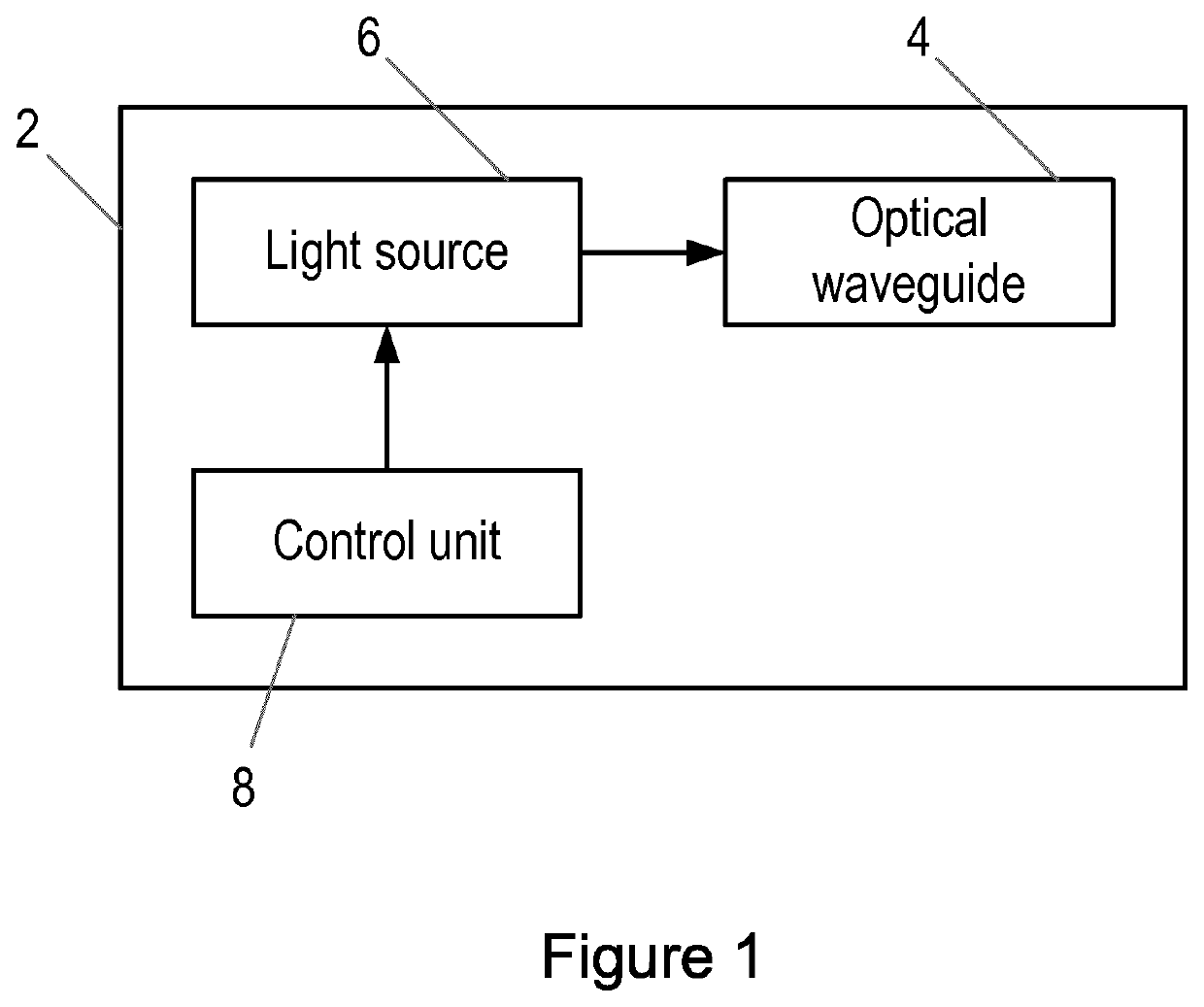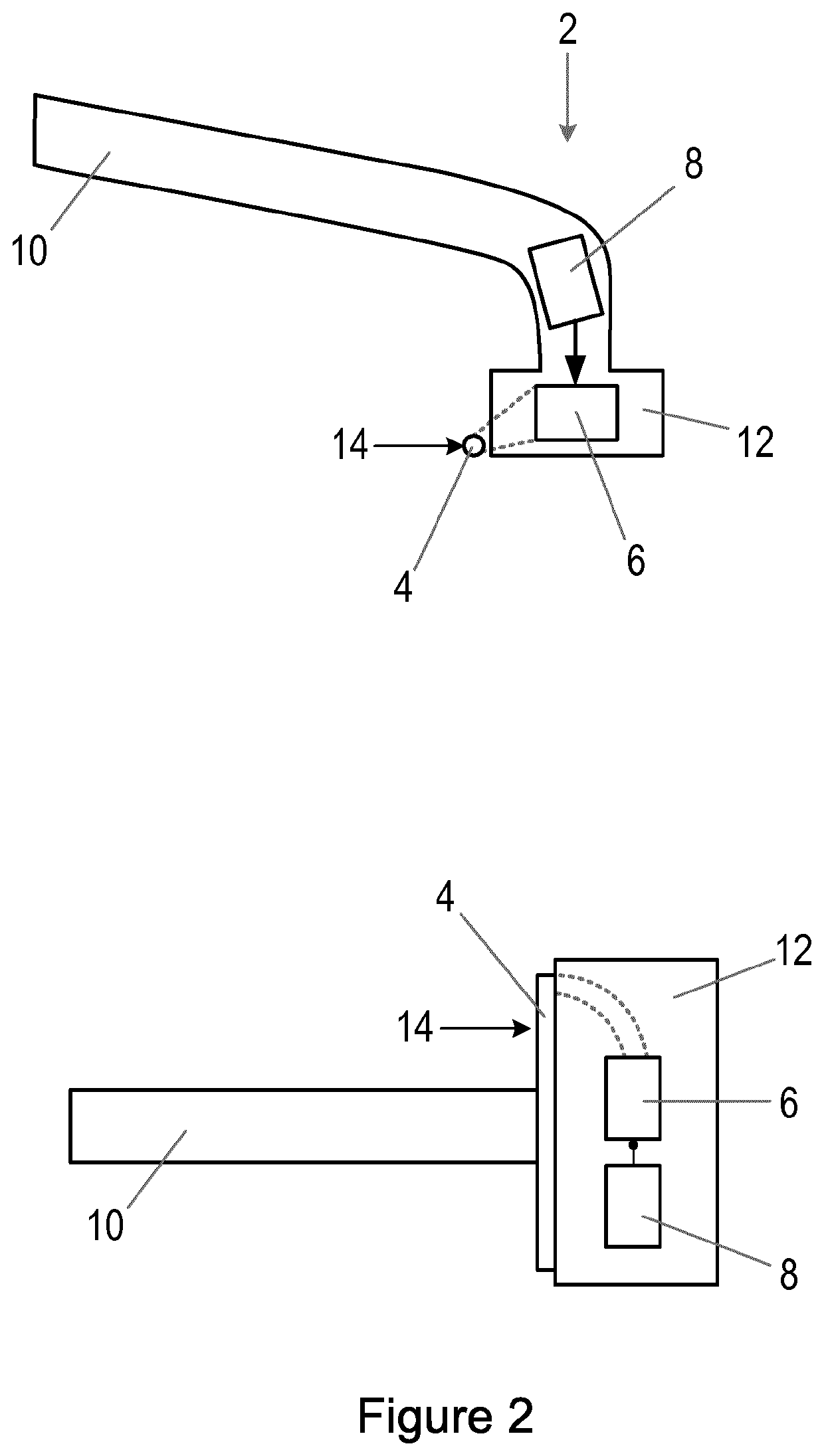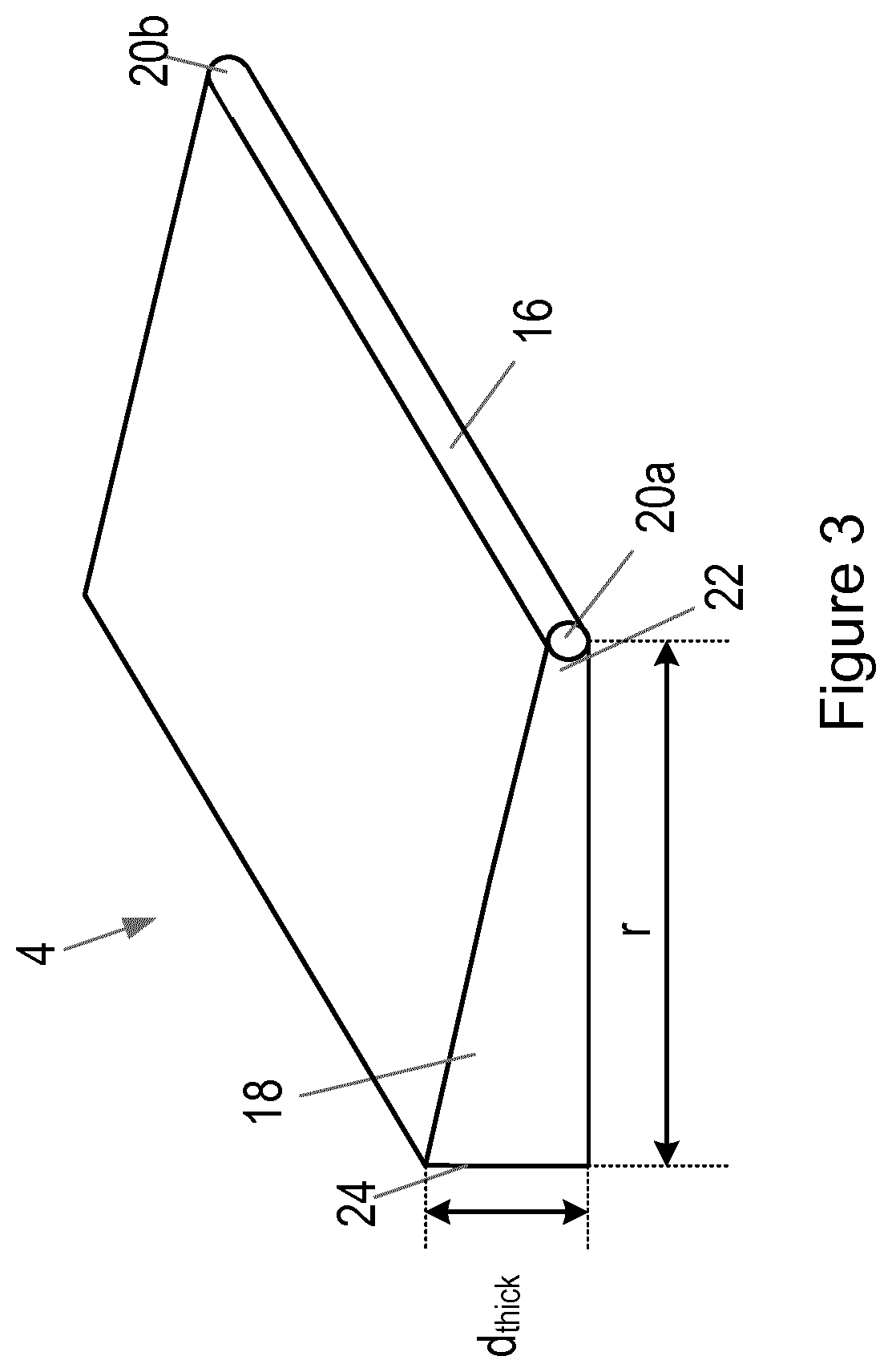A cutting element for use in a hair cutting device, and a method of manufacturing the same
a cutting element and cutting device technology, applied in the direction of manufacturing tools, instruments, fibre light guides, etc., can solve the problems of reducing requiring replacement, and reducing the efficiency of shaving devices, so as to reduce the effectiveness of shaving devices and reduce the cost. , the effect of high precision
- Summary
- Abstract
- Description
- Claims
- Application Information
AI Technical Summary
Benefits of technology
Problems solved by technology
Method used
Image
Examples
first embodiment
[0060]FIG. 5 illustrates two ways in which light from a light source 6 in the hair cutting device 2 can be coupled into core 16 of the cutting element 4. In a first embodiment, shown in FIG. 5(a), light from the light source 6 can be coupled into the first end 20a of the core 16 via an optical fibre 32 (or other type of optical waveguide) and a prism 34 (or other type of light reflecting component). The use of prism 34 provides a compact arrangement for coupling the light into the core 16. A second prism 36 (or other type of light reflecting component) can be provided at the second end 20b of the core 16 for coupling light that has passed through the core 16 into a second optical fibre 38. The second prism 36 and second optical fibre 38 remove light from the cutting element 4 (which is close to the skin of the subject) in order to avoid the cutting element 4 being heated by the light. It will be appreciated that alternative structures can be used for this purpose, and the structure ...
second embodiment
[0062]In the second embodiment shown in FIG. 5(b), a first light guide 40 can be provided between the first optical fibre 32 and the prism 34 to improve the coupling of light from the light source 6 to the core 16. Likewise, a second light guide 42 can be provided between the prism 36 and the second optical fibre 38 to improve the coupling of light from the core 16 to the second optical fibre 38. The first light guide 40 can be provided with a lens or other optical element at the coupling with the first optical fibre 32 for focusing the light from the light source 6 into the first light guide 40.
[0063]FIG. 6 illustrates a preferred arrangement of the coupling between the light source 6 and the core 16. In particular, to reduce or avoid power loss, the diameter Φin of the first optical fibre 32 (in the FIG. 5(a) embodiment) or the first light guide 40 (in the FIG. 5(b) embodiment) is less than the diameter d of the core 16. To reduce or avoid power loss in the coupling from the core ...
PUM
| Property | Measurement | Unit |
|---|---|---|
| wavelengths | aaaaa | aaaaa |
| wavelengths | aaaaa | aaaaa |
| diameter | aaaaa | aaaaa |
Abstract
Description
Claims
Application Information
 Login to View More
Login to View More - R&D
- Intellectual Property
- Life Sciences
- Materials
- Tech Scout
- Unparalleled Data Quality
- Higher Quality Content
- 60% Fewer Hallucinations
Browse by: Latest US Patents, China's latest patents, Technical Efficacy Thesaurus, Application Domain, Technology Topic, Popular Technical Reports.
© 2025 PatSnap. All rights reserved.Legal|Privacy policy|Modern Slavery Act Transparency Statement|Sitemap|About US| Contact US: help@patsnap.com



